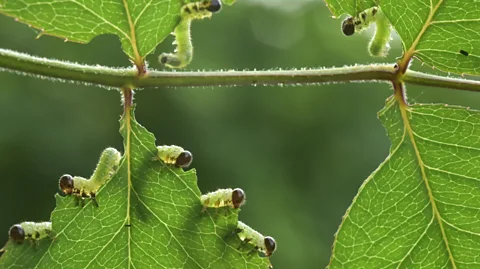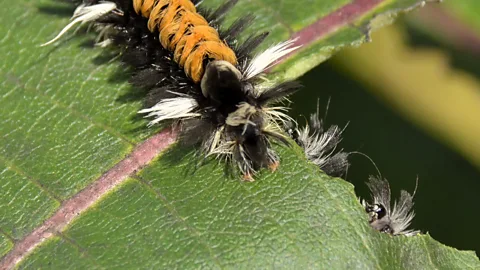Why you should let insects eat your plants
 Getty Images
Getty ImagesRenegade gardeners across the world are embracing a new philosophy: gardening that prioritises insects, not plants.
The marauders appeared out of nowhere. Looking through my window, I saw them – dozens of what looked like tiny grey caterpillars crawling all over a lovely green plant in my garden. I watched, with some horror, as over a matter of days, these insects chewed the plant to bits.
Countless leaves were munched to nothing, with only sad, spindly stems remaining. Finally, jet-black flies – the grey gobblers transformed – went buzzing off into the world beyond. Presumably, to wreak havoc elsewhere. Initially, I felt like a farmer whose field of maize had just been ravaged by locusts.
However, a little Googling set me straight. It turned out that the plant in question, the name of which was previously unknown to me, was Solomon's seal or Polygonatum – a classic cottage garden plant that, each summer, becomes locked in a tussle with the very insect invader I had witnessed: Solomon’s seal sawfly. A female sawfly had laid her eggs on my plant. Out of those eggs had hatched the grey larvae that ended up devouring it. And all of this was actually fine.
According to the UK's Royal Horticultural Society (RHS), Solomon's seal is relatively unbothered by this extreme defoliation. "This insect can be tolerated and the plants will survive," the RHS writes on its information page for the insect. What initially seemed like a macabre assault on a perfectly blameless plant was revealed to be just one of those many trade-offs that occur in nature all the time. Solomon's seal had evolved to simply shrug its shoulders and move on.
All over the world, there are insects that depend on plants for food. They munch at stems, and strip leaves to pieces. They make cuts and holes in otherwise pristine vegetation. To some gardeners, this is anathema. But others recognise that it's all a natural part of how ecosystems work – and without an insect-rich ecosystem, there would be no gardens at all.
Over the last few decades, a massive global crisis has affected insect populations, which are declining at a rate of between 1% and 2% every year. This means that practically any intervention that could help these creatures is valuable. More people are "planting for pollinators", with one 2022 survey finding one in three US adults purchase plants to help wildlife, an increase of 26% from 2020. This helps ensure there are lots of native wildflowers to supply bees, hoverflies and butterflies with nectar. But should we also try horticulture for herbivores, too? Should we plant things in the hope they will get gobbled up? To find out, I turned to the experts.
 Getty Images
Getty ImagesThe beautiful red rose bush in a garden previously belonging to Hayley Jones, the principal entomologist at the RHS, was frequently the subject of debate between her and her husband. "He enjoyed the flowers – but I quite enjoyed looking at the sawfly," Jones tells the BBC. Various species of sawfly larvae would target the rose, she recalls – some would munch away at the leaves while others had very particular dining habits. "There's one species that rolls the leaves up," she says. "They eat it from the inside." A burrito for a bug.
The damage to the rose's foliage never really bothered Jones and, in general, she says she enjoys watching larvae and caterpillars chow down on plants. If you plant things destined to get eaten, you will naturally encourage the next link in the food chain, as predators such as birds come to your garden, too. A well-balanced garden shouldn't be munched down to the ground and left a wasteland – that should never happen in a biodiverse system, says Jones.
Having worked for the RHS for nearly a decade, Jones says she has noticed more and more gardeners expressing tolerance of herbivores. The frantic query of "how do I kill it">window._taboola = window._taboola || []; _taboola.push({ mode: 'alternating-thumbnails-a', container: 'taboola-below-article', placement: 'Below Article', target_type: 'mix' });
